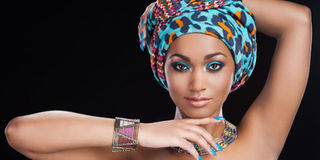What we can learn from Korean beauty industry

K-Beauty grew because Asia met its own needs. Cosmetics companies now have to pay attention to the needs of women of colour. So the better we are at reading our skin, the better the quality of products we will get, and the more involved we can be in caring for our skin. PHOTO | FILE
What you need to know:
- K-Beauty grew because Asia met its own needs. It is less about the many steps involved than it is about the culture of skincare. Korean girls are groomed into it from as early as age 5. It is such a fundamental part of their nature that men are in it too, their spending doubling inside a decade.
- Baby skin is embraced thanks to a very influential K-Pop culture with TV and music stars as huge celebrities all promoting a perpetual youthful dew. Any products they use, promote and endorse sell out. Everyone else is in on it too.
- A takeaway from K-Beauty for darker skin does not lie in agitating for our own skincare products. It lies in refurbishing the natural hair movement. When no one was taking care of our hair, we found ways to do it, and invented products, lifestyles and regimes to look after it ourselves.
There was a time the French had locked down the secrets to style and beauty. Then their beauty secrets got bumped off by South Korea. Now the beauty world is looking to the asian country.
The Americans call it, ‘K-Beauty’. It is the hub of cutting edge skincare technology with ingredients not found in any American or European products. Snail slime and mushrooms make the list, helping South Korea export over $2.6 billion (Sh260bn) worth of skincare products in 2015 alone. Remember BB cream? It was made in South Korea more than 20 years ago.
But why South Korea? Right now there is an obsession with their 10+ step regimen; oil cleanse, water cleanse, toner, exfoliant essence, hydrating mask, serum, eye cream, moisturiser, and sunscreen. K-Beauty is an age-old phenomenon where pale skin symbolised nobility and wealth.
Even their makeup trends emphasise this apple-cheeked pre-pubescence. Colourful, vibrant eye shadow palettes may be all the rage in YouTube and fashion but not for the Koreans. They are about foundation-free, wide-eyed natural beauty. Theirs is a culture primarily focusing on skincare, with parasols, SPF and gloves coming out with the sun. Porcelain complexions are valued and hyperpigmentation, the enemy.
Rich culture
K-Beauty, however, is less about the many steps involved than it is about the culture of skincare. Korean girls are groomed into it from as early as age 5. It is such a fundamental part of their nature that men are in it too, their spending doubling inside a decade.
The idea of male beauty in Korea is not defined by rugged masculinity. They have their own standard. Baby skin is embraced thanks to a very influential K-Pop culture with TV and music stars as huge celebrities all promoting a perpetual youthful dew. Any products they use, promote and endorse sell out. Everyone else is in on it too. Skincare technology and research is innovative and competitive, making prices lower, and it keeps the industry on its toes.
TRUE SECRET
What the world is experiencing now is the bursting of the tide. As Americans are still debating how time efficient the 10 to 13 step skin care process is, despite documented improvement on their skin, K-Beauty is personalising skin care, investing heavily on specific products for the skin’s ever changing needs.
This is where the true secret lies. Not with the layer upon layer of sheet masks, essences or exfoliants, but in the adapting of the regimen that suits the needs of your skin.
Products target every skin care challenge from hormonal fluctuations, pigmentation, acne to wrinkles. They tap or pat products into their skin with their fingertips or palms, not rubbing them on vigorously. Some products come with detailed instructions on how to use.
The main reason why you probably may not have heard of it is because skin whitening is part of the lingo. Though in fairness products are referenced as skin brighteners to help, well, make your complexion brighter. K-Beauty has not filtered down to women of colour. Part of it may just be because we are still caught up in debating whether or not toner is really necessary, and how “black don’t crack.”
It could also be that black women are rarely taught, from a young age, to pamper themselves, which is the very act K-Beauty encourages with skincare, turning it into a lifestyle as opposed to something a woman has to suffer through for beauty. It could be this self-loving attitude and investment in oneself daily that acts as a partial antidote to aging.
Publications like Essence magazine attempt to break down K-Beauty, encouraging women to adopt its four pillars mainly customisation, complexion, hydration and protection. Besides, not all steps have to be followed every single day, twice a day.
A takeaway from K-Beauty for darker skin does not lie in agitating for our own skincare products. It lies in refurbishing the natural hair movement. When no one was taking care of our hair, we found ways to do it, and invented products, lifestyles and regimes to look after it ourselves.
K-Beauty grew because Asia met its own needs. Cosmetics companies now have to pay attention to the needs of women of colour. So the better we are at reading our skin, the better the quality of products we will get, and the more involved we can be in caring for our skin. Even if we have to create it ourselves. Black needs to own it’s skin.





